by Matthew Cobb
It’s Friday and I have a ton of exam marking to do, so I don’t have time to post anything serious. Here, via @EdYong209, are a series of GIFs – those little animated loops people put on websites. Heaven knows how they make them.
All of them are taken from the excellent headlikeanorange Tumblr. If you’re on a mobile device or have a slow internet connection, or your computer is made of clockwork, you should allow some time for the page to load. (In one of those coincidences, I used to work at a French research centre in Gif (Gif-sur-Yvette, south of Paris), which is where I first met Jerry when he came on sabbatical to work on flies there.)
A freshwater, stingless, golden jellyfish that has symbiotic photosynthetic algae (Wonders of Life – BBC)
Fowler’s toad (Wonders of Life – BBC)
A dragonfly (Wonders of Life – BBC)
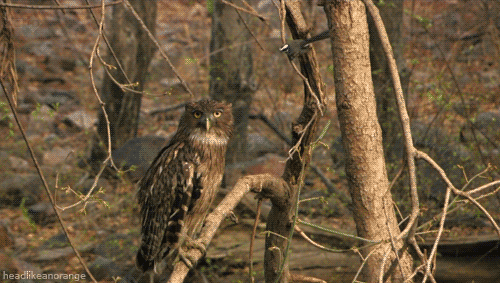
Owl gets biffed. Any id?
Shoebill (BBC – Africa)

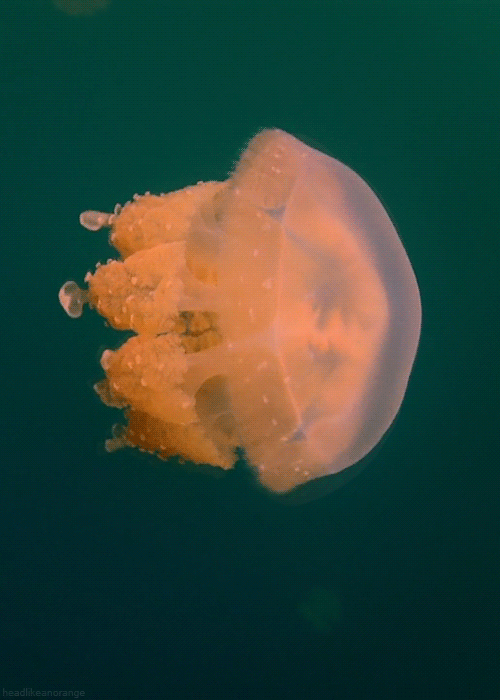
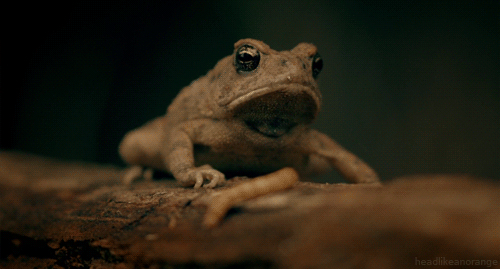
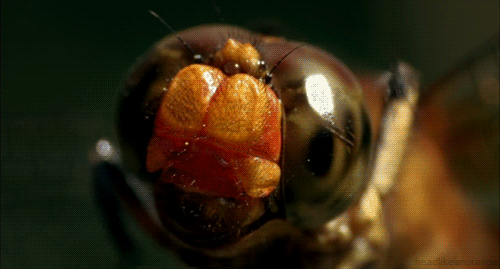
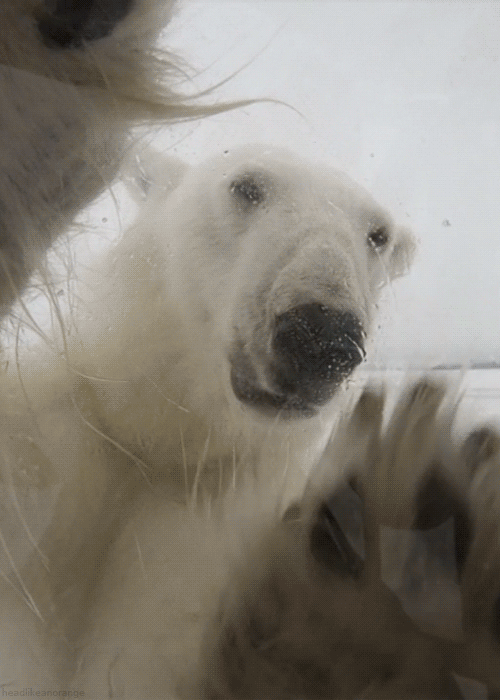
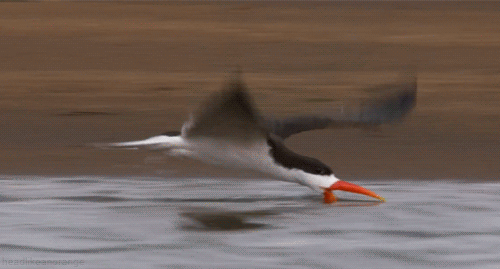
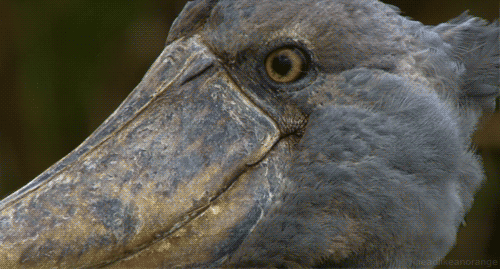

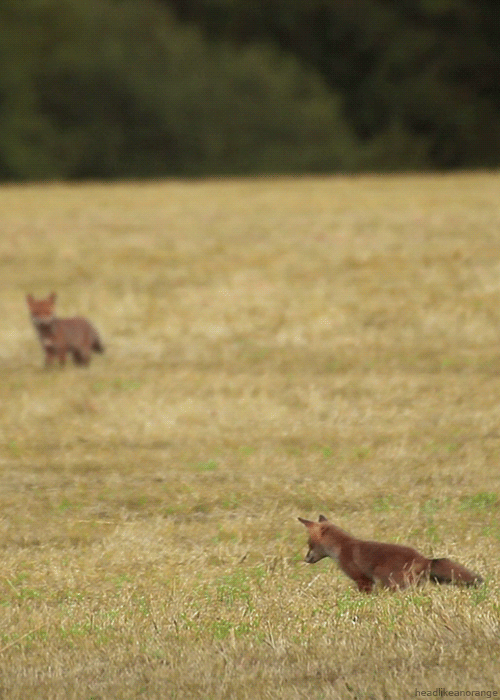

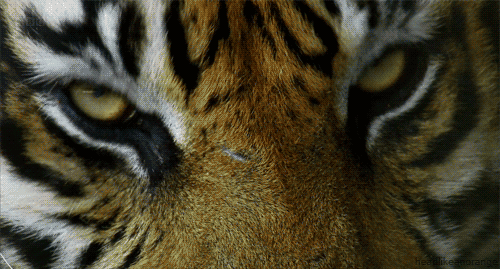
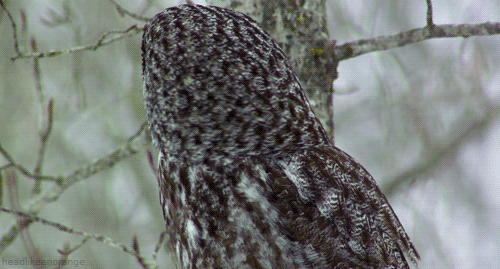
These are great apart from the polar bear one, which – if you imagine yourself trapped in a car with a polar bear clawing at the window – gives me the creeps.
Polar bears are stealth hunters. Seals may be their main source of food, but a hungry one will certainly put some effort into stalking a human if it comes across one.
Churchill, Manitoba is the place to go if you want to get fairly close to one. It’s a much closer destination than Alaska if you’re in the CONUS.
October and November are the best months for the bears and for the next few years, you have a very good chance to see some spectacular Auroras as well.
Also scary… imagine yourself as that ant.
The polar bear may be from an episode of Planet Earth. There was a 10-minute documentary at the end following the guys who had taken all the polar bear pictures in the programme, showing them being pinned inside their hut as the bear roamed around outside.
It ended with the bear leaping at the window in a scene which would grace any horror film.
The above picture may be from that, or from an unmanned outside camera.
There was a famous NatGeo special some years ago which showed a similar scene. It turned out that the photographer had baited the camera with sardines. Wildlife photographers and videographers are almost invariably manipulative.
But but…….I thought the animals came to the cameras voluntarily so they could meet David Attenborough?
You’ve shattered my illusions…….
It’s from “The Polar Bear Family & Me”.
http://www.bbc.co.uk/programmes/galleries/p012yh4m
The bear doesn’t look like it’s attacking, just curious.
I remember something some time back about videographers putting cameras in something resembling a beach ball and leaving it for polar bears to find. The bears found the cameras, had some fun playing with them, all caught on tape. But, as I recall, the cameras didn’t survive.
Perhaps somebody with a better remembery will post a link….
b&
It would be interesting to know how they do this
I love the owl getting biffed.
Yes, that one is my favorite also.
My fav too. Cracks me up. He looks totally unfazed.
The blinking tiger is GRRREEEAAT! But they are all great, thanks!
Yes! Hope the stoodents did good work!
That’s the classic happy friendly cat “Hey there, pal!” slow squint, for sure. The dozen million years since the housecat and the tiger shared a common ancestor has most definitely not significantly changed their body language. You can just imagine the head bump and cheek rubbing that came moments after the squint….
b&
Not just GIFs, animated GIFs.
That bugs me, too — that “GIF” has now come to mean not an image encoded in CompuServe’s Graphics Interchange Format, but rather a short video loop.
As somebody who still remembers the patent war, it’s particularly confusing….
b&
Yeah, but who uses unanimated GIFs anymore?
Those of us who learned to code in less than 4K of memory and who still take a pride in producing lean and efficient resources.
Actually, PNG is more compact for most images, offers better palette and transparency support, and is an official W3C standard. So really there isn’t much reason to continue using GIFs other than nostalgia.
Agreed. Some years ago I got the job of speeding up a dreadfully slow company website. The main problem was the Javascript, but while I was at it I converted the GIFs to PNGs. All the PNGs were at least 10% smaller, and some were over 25% smaller.
I confess: I am using PNG more these days, now that there is widespread support. It all depends on how many colours you’re using.
Those of us who received threatening letters from (IIRC it was “Unisys”?) demanding payment of royalties for aLL SALES OF OUR SOFTWARE WHICH COULD (Damned CapsLock!) write images as GIFs … can also remember how long (some minutes) it took to rip out the GIF-writing capability, replace it with a PNG module, re-write the documentation, package a new release onto the company website, send out an email to all customers advising them of the important update.
Then our lawyers took a lot longer about writing a letter back to Whoever-it-was, explaining that that programme was distributed free of charge to our customers and anyone else who might be a recipient of some of our data files … and that therefore there were precisely zero sales of the software for them to demand a license fee on.
And we’ve never touched GIF since, and we never will.
Good marketing, guys!
Great post.
The owl getting biffed is a Brown Fish Owl (Ketupa zeylonensis). It’s mobbed by a Fantail (don’t know exactly which species though, I don’t have my identification guides at hand)…
Cool stuff!
You need a series of still images to start with. Maybe they are extracted from a video.
Then you need software to assemble the stills into an animated GIF. Presuming you want to work with open source software, I can recommend the ImageMagick package, which is free and is available on Linux and several other operating systems. Documentation and examples are available at their web site, http://www.imagemagick.org.
ImageMagick v6 Examples — Animation Basics
The “convert” command is what you need for this task. A typical command might look like this:
> convert -delay 20 in????.png -loop 0 out.gif
The “delay” parameter is to set a rate at which to transition from one image to the next; units are 1/100 seconds.
“loop” specifies how many times to cycle through the sequence. 0 means infinite.
“in????.png” represents the input images, where ‘?’ is the Linux wildcard for a single character.
out.gif, obviously, is the name of the output file.
A protein crystal mounted for an Xray diffraction experiment
I’m guessing that the bird being biffed is a brown fish owl, which likely puts us somewhere in India. The biffing passerine might take a bit of time; lacking an Indian field guide, I don’t have a clue even to family. There’s a long tail with white outer tail feathers. Hmmm. White-throated fantail, perhaps?
I sent this to my post-doctoral mentor, also a world-class birder (who once, on one day’s notice flew from Stockholm to Australia to see an occasional that had turned up there, saw it, drove back to the airport and flew back home.) Agreement with both of you on the brown fish owl. As to the passerine:
I tried to stop the film in order to see the front of the passerine better, but I could not stop it. The very white brow of the Fantail would isolated fit better with a White-browed Fantail, but the breast seems too white, and the cheek too dark for that one for me. Thus, my guess is White-spotted Fantail (Rhipidura albogularis), with a smallish back-up alternative of White-browed Fantail (Rhipidura aureola).
The scariest thing is that grey owl. Look at those eyes! If I was a small furry rodent I’d be a twitching heap of fear at that point.
If you were a lungfish, the shoebill would be having that effect. To each its own.
The best loops (tecnically) are Fowler’s toad and the african skimmer – you can’t tell visually where the join is. In the case of the skimmer it’s enormously helped by the background which has mottled detail (muddy lake banks) but no distinctive features.
Animated GIF loops can be constructed in Photoshop but there is more sophisticated (and free!) software available. We use this:
http://www.mindworkshop.com/gifcon.html
As noted above by Mr. Selkirk, you need a series of photos or drawings to start with.
Here’s an animated GIF that we made of a Giant Swallowtail caterpillar (Papilio cresphontes). The caterpillar looks like a bird dropping. When touched, it inflates two balloonlike “horns” on top of its head:
http://www.mineralarts.com/images/GiantSwallowTail_anim.gif
(The caterpillar wasn’t hurt or squashed, despite what it looks like, and was returned to a branch to resume chomping on grapefruit leaves).
There is a Motion-JPG extension of the JPEG standard for doing much the same with photographic images as GIF was intended to do for line-art images. There’s also a similar, but less-used Motion-PNG extension to PNG.
But with broadband, there’s a whole profusion of other video formats to tinker with. And mountains of software to do it with.